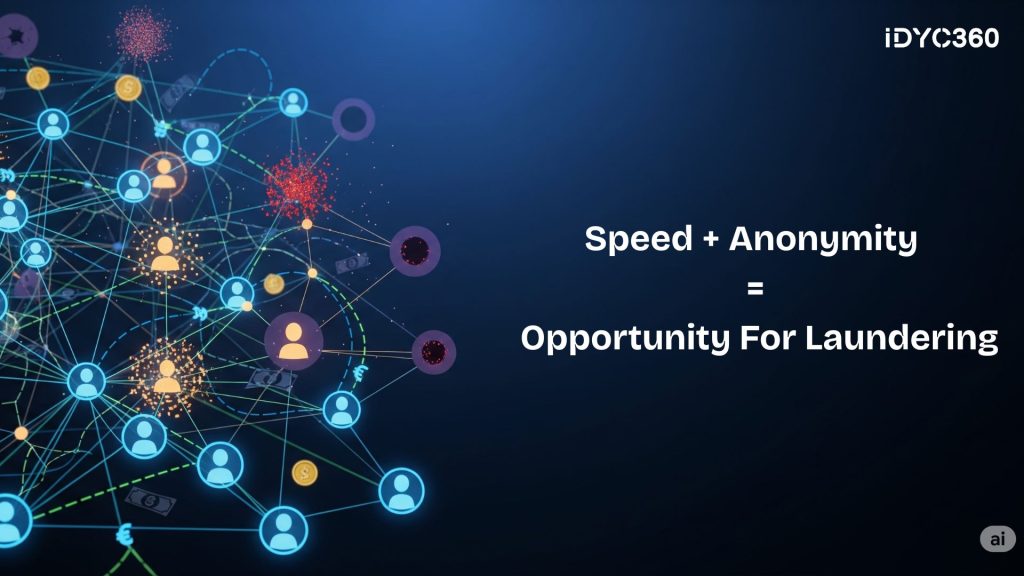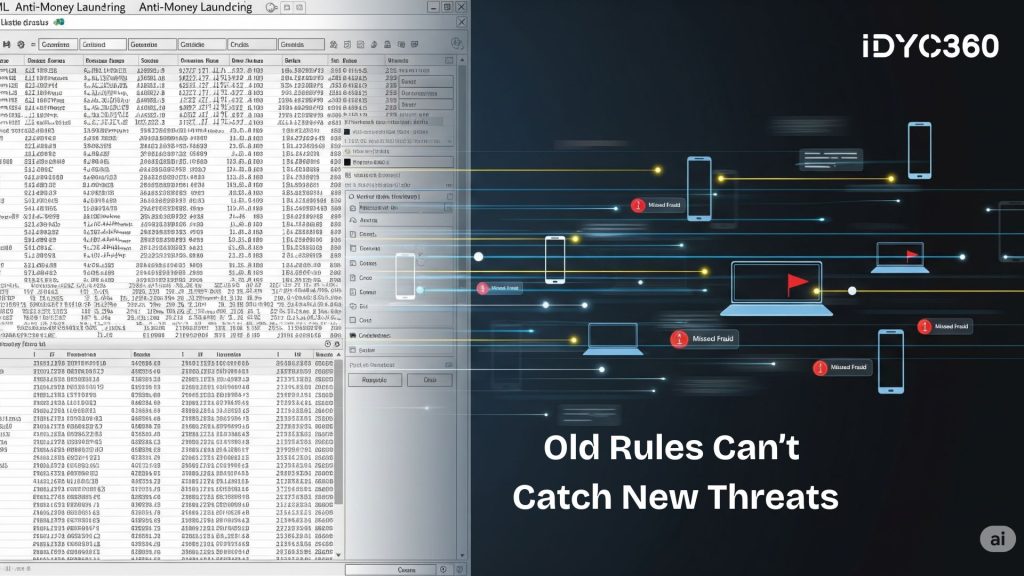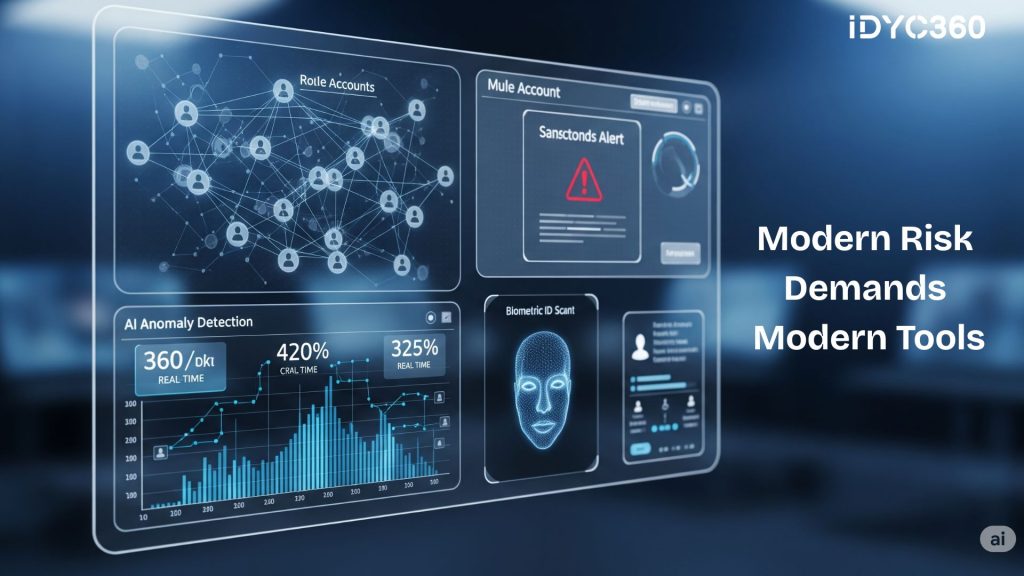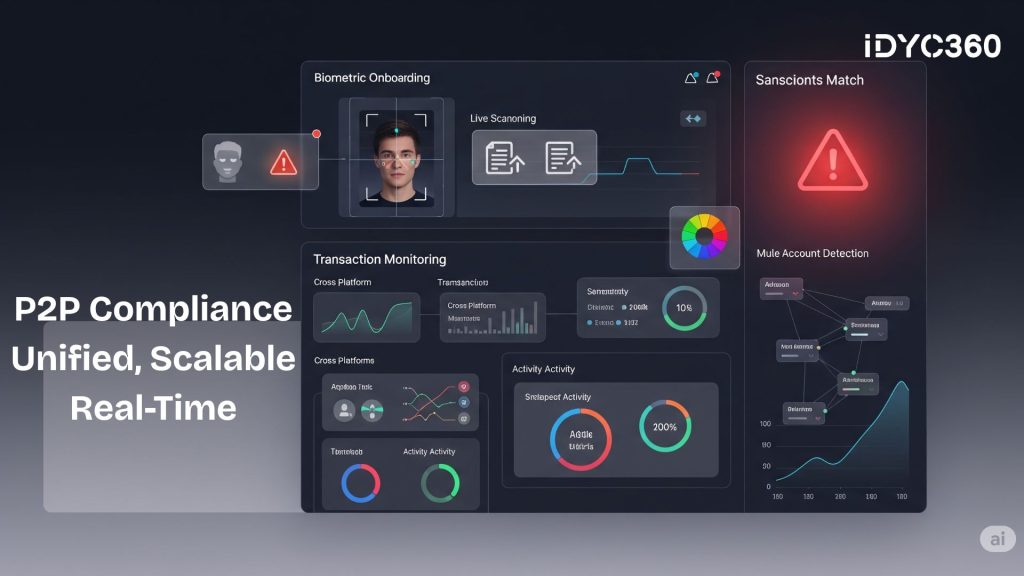Peer-to-peer (P2P) payments have fundamentally changed the way money moves in the digital age. Fast, convenient, and borderless, these transactions are now an everyday tool for consumers, merchants, and gig economy workers, driving financial inclusion like never before.
But with their growth comes escalating risk: as more transactions flow through untraditional channels, fraudsters and money launderers are finding new gaps to exploit.
Why this matters now:
- Criminals increasingly use P2P platforms to move illicit funds, hiding behind anonymity and speed.
- Regulators demand that fintechs apply the same anti-money laundering (AML) rigor as banks.
- Institutions failing to modernize their fraud defenses face reputational, regulatory, and financial fallout.
This article explores the unique risks of P2P fraud in 2025, why classic controls struggle to keep up, and how fintech innovators are fighting back with technology and smarter compliance.
Understanding Money Laundering Risks in P2P Payments

P2P platforms empower users to send and receive funds instantly, but this same agility creates vulnerabilities.
Key vulnerabilities and challenges:
- Identity Obfuscation: Unlike traditional banks, some P2P platforms have historically offered less stringent onboarding checks, letting fraudsters set up accounts using stolen or synthetic identities.
- Lack of Visibility: Rapid, real-time transfer across borders makes it easier for launderers to “layer” transactions and sever audit trails.
- Unregulated Intermediaries: Some P2P networks operate outside regulated environments, especially when paired with self-hosted wallets or digital assets, complicating risk monitoring.
- Volume & Speed: High transaction volumes and small payment values mean suspicious activity often blends in, especially when manual review is used.
Common laundering typologies on P2P networks include:
- Money mule rings for structuring and moving illicit proceeds.
- Synthetic ID fraud is used to open multiple accounts.
- Use of crowdfunding and lending platforms to clean illegal funds under legitimate investment covers.
- Exploiting the anonymity of cryptocurrency P2P exchanges and wallets.
Why Traditional AML Measures Fall Short

Conventional AML controls—designed for in-branch banking—struggle to adapt to a P2P and fintech-led payments ecosystem.
Why are old controls inadequate?
- Fragmented Data: Siloed customer and transaction data make cross-platform risk assessment difficult.
- Manual Monitoring: Human review can’t keep up with vast, real-time data flows—delayed intervention is less effective.
- Static Rule Sets: Traditional monitoring often fails to detect new fraud schemes orchestrated across digital channels.
- Inconsistent KYC: Varying standards for verifying users result in gaps vulnerable to exploitation.
For fintechs, rapid onboarding and a focus on seamless user experience can inadvertently lead to shortcuts or blind spots in compliance, increasing sector vulnerability.
Advanced Strategies Fintechs Are Using in 2025

The most innovative fintechs are pushing beyond checklist compliance, using technology and robust protocols to move ahead of criminal tactics.
Modern fraud prevention and AML best practices in P2P:
AI-Powered Transaction Monitoring
- Leveraging machine learning to analyze behavior and detect anomalies across millions of real-time transactions.
- Continuous adaptation as new fraud patterns emerge, minimizing false positives while spotting previously hidden risks.
Layered KYC & Identity Verification
- Combining biometric authentication, government ID checks, and behavioral analysis to thwart synthetic and stolen identities.
- Ongoing identity verification at key transaction touchpoints—not just during account setup.
Real-Time Sanctions, PEP & Watchlist Screening
- Automated screening of all new and existing users against dynamic global databases.
- Immediate flagging and freezing of accounts linked to known money laundering or terrorism financing risks.
Network Analysis for Mule Detection
- Mapping transactions and user networks to identify connected accounts and possible mule activity.
- Use of graph analytics to detect indirect relationships associated with laundering ring behavior.
Early Warning Triggers & Alerts
- Implementation of transaction limits, velocity controls, and alerts for unusual transaction sizes, volumes, or geographies.
- User alerts and intervention processes to pause or reverse payments flagged as suspicious.
Collaboration with Banks & Industry Peers
- Sharing threat intelligence with banks and other fintechs through secure, privacy-compliant channels.
- Participation in industry partnerships to crowdsource knowledge of new money laundering methodologies.
Regulatory Environment and 2025 Trends

The regulatory landscape is catching up to the scale and complexity of the threat, especially in markets like India, the US, and the EU.
Key regulatory and industry shifts:
- P2P platforms must now meet the same AML, KYC, and suspicious activity reporting obligations as banks.
- Global regulators are harmonizing standards and cross-border coordination to close jurisdictional gaps exploited by fraud rings.
- Firms face heightened scrutiny for effective customer due diligence, especially when enabling crypto or international transfers.
- Penalties for non-compliance have soared, and the liability model is shifting: platforms failing to prevent or report laundering risk hefty fines and reputational harm.
How IDYC360 Helps

IDYC360 delivers a unified solution tailored to the demands of P2P payment security and compliance in 2025:
- End-to-End KYC & Biometric Onboarding: Instantly verify users with multimodal biometrics, detect fraudulent accounts before they transact, and re-authenticate at high-risk moments.
- AI-Driven Transaction Monitoring: Analyze cross-platform behavioral trends and stop suspicious payments in real time—no matter the payment channel or currency.
- Integrated Watchlist Screening: Seamlessly scan every user and transaction against the latest PEP, sanctions, and adverse media lists—globally and instantly.
- Mule Network Analysis: Deploy advanced graph analytics to map user relationships and spot potential money mule networks before they escalate.
- Regulatory Reporting Automation: Streamline audits and suspicious activity reports, reducing manual burden while ensuring compliance is always up to date.
- Expert Advisory & Response: Access industry-leading compliance experts to assess, remediate, and future-proof your program, with tailored playbooks, crisis management, and training.
Final Thoughts

Safeguarding P2P payments against money laundering is one of the defining challenges—and responsibilities—of the modern fintech era. As platforms innovate and financial crime evolves, only the most forward-thinking institutions will earn the trust of users, regulators, and industry partners.
Proactive risk controls, technology-driven compliance, and real-time vigilance move security from a check-box to a foundation for sustainable growth.
Ready to Stay
Compliant—Without Slowing Down?
Move at crypto speed without losing sight of your regulatory obligations.
With IDYC360, you can scale securely, onboard instantly, and monitor risk in real time—without the friction.










